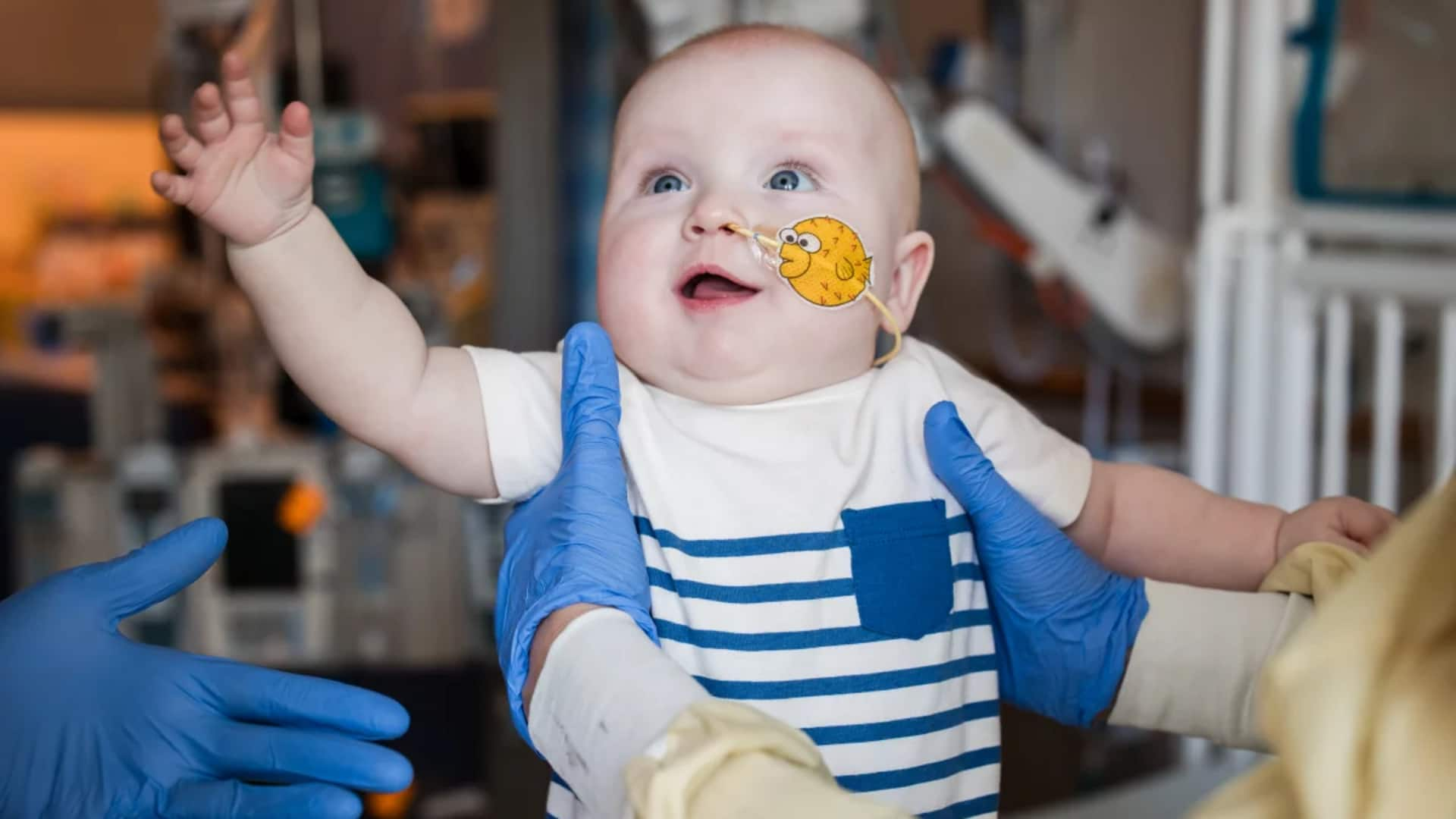
Doctors use tailored gene editing to treat infant's rare disorder
What's the story
KJ Muldoon, a baby suffering from the rare genetic disorder carbamoyl phosphate synthetase 1 (CPS1) deficiency, has received a personalized CRISPR treatment. CPS1 causes dangerous levels of ammonia in the blood, leading to a life-threatening liver condition, which can be fatal within the first year for half of the patients. Conventional treatments involve strict diets and liver transplants, but KJ's unique therapy was developed by a team at Children's Hospital of Philadelphia (CHOP) and Penn Medicine in just six months.
Scenario
Why is CPS1 deficiency life-threatening?
CPS1 deficiency hinders the body's ability to safely process ammonia, a waste product formed when proteins are broken down. In people with this disorder, the liver lacks a key enzyme needed to convert ammonia into urea for elimination. Without this process, ammonia builds up to toxic levels in blood, posing a severe risk to the brain and other organs. In infants, the condition can progress rapidly and may lead to death or permanent damage within days if not treated promptly.
Treatment progress
Therapy shows promising results
KJ's custom CRISPR treatment has shown remarkable improvements. Initially, he had rigid muscles and refused to eat. However, after three doses of the personalized therapy, KJ started reaching developmental milestones his parents never expected him to achieve. He can now eat certain foods and sit upright on his own. "He really has made tremendous strides," said his father Kyle Muldoon.
Future prospects
Treatment offers hope for rare diseases
The case of KJ Muldoon was detailed in a study published in The New England Journal of Medicine. It was also presented at the American Society of Gene & Cell Therapy annual meeting in New Orleans. This groundbreaking treatment could serve as a model for developing personalized gene-editing therapies for other patients with rare diseases that currently have limited or no medical treatments available.
Genetic editing
CRISPR technology used to edit DNA
The team employed CRISPR, a Nobel Prize-winning technology capable of precise DNA editing. They focused on the particular genetic mutation responsible for KJ's disease, which was detected through genome sequencing at birth. The researchers employed a variant of CRISPR, known as base editing, to change one "letter" in his DNA sequence and packaged these elements in lipid nanoparticles for IV infusion delivery.
Safety measures
Team's meticulous approach to CRISPR
Before being given to KJ, the CRISPR treatment was tested for safety in mice and monkeys. The team also sought permission from the US Food and Drug Administration (FDA) to use this unapproved experimental treatment on a single patient. After receiving the approval, KJ was given his first dose of the custom therapy on February 25, marking a major milestone in personalized medicine.